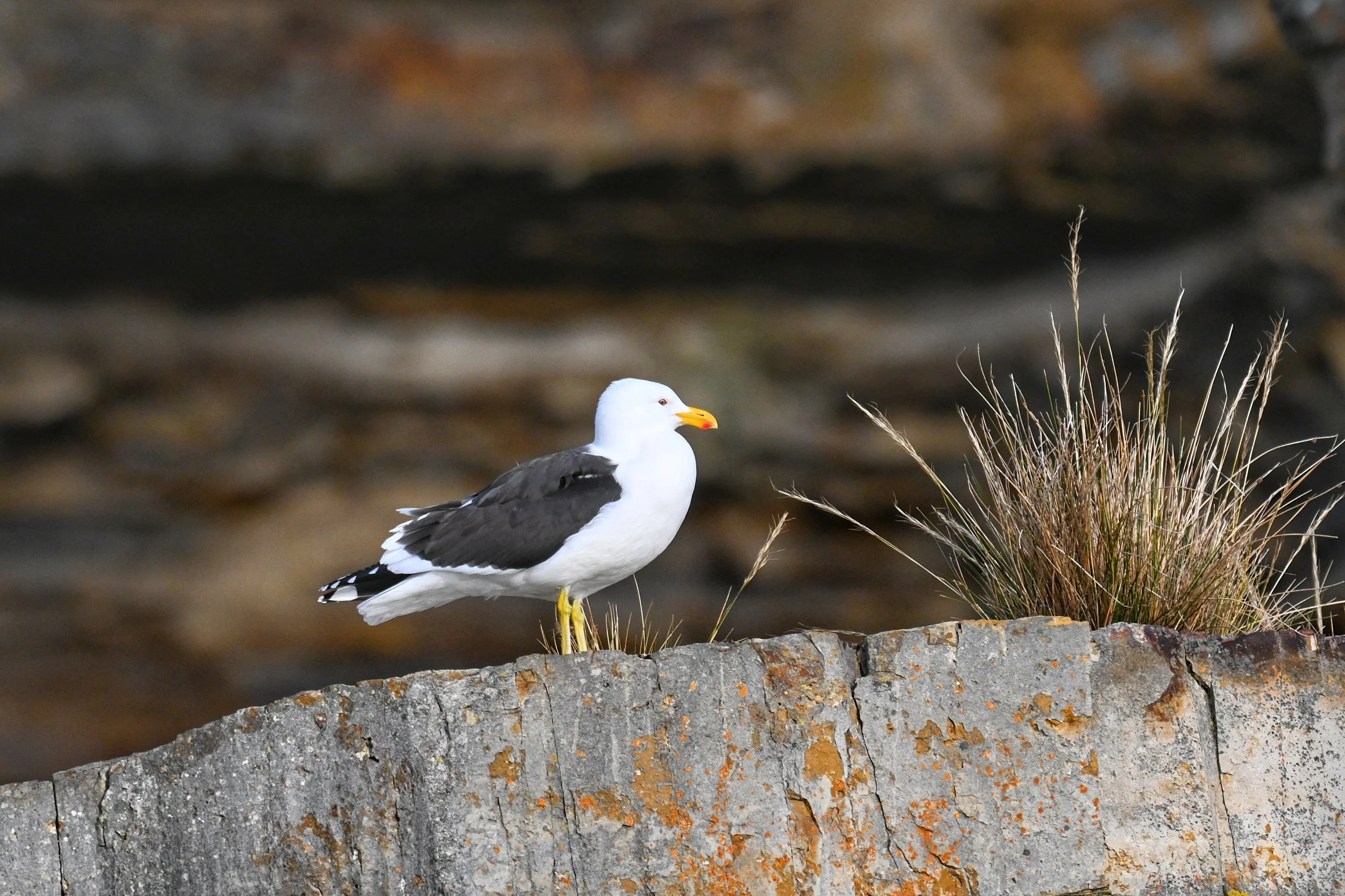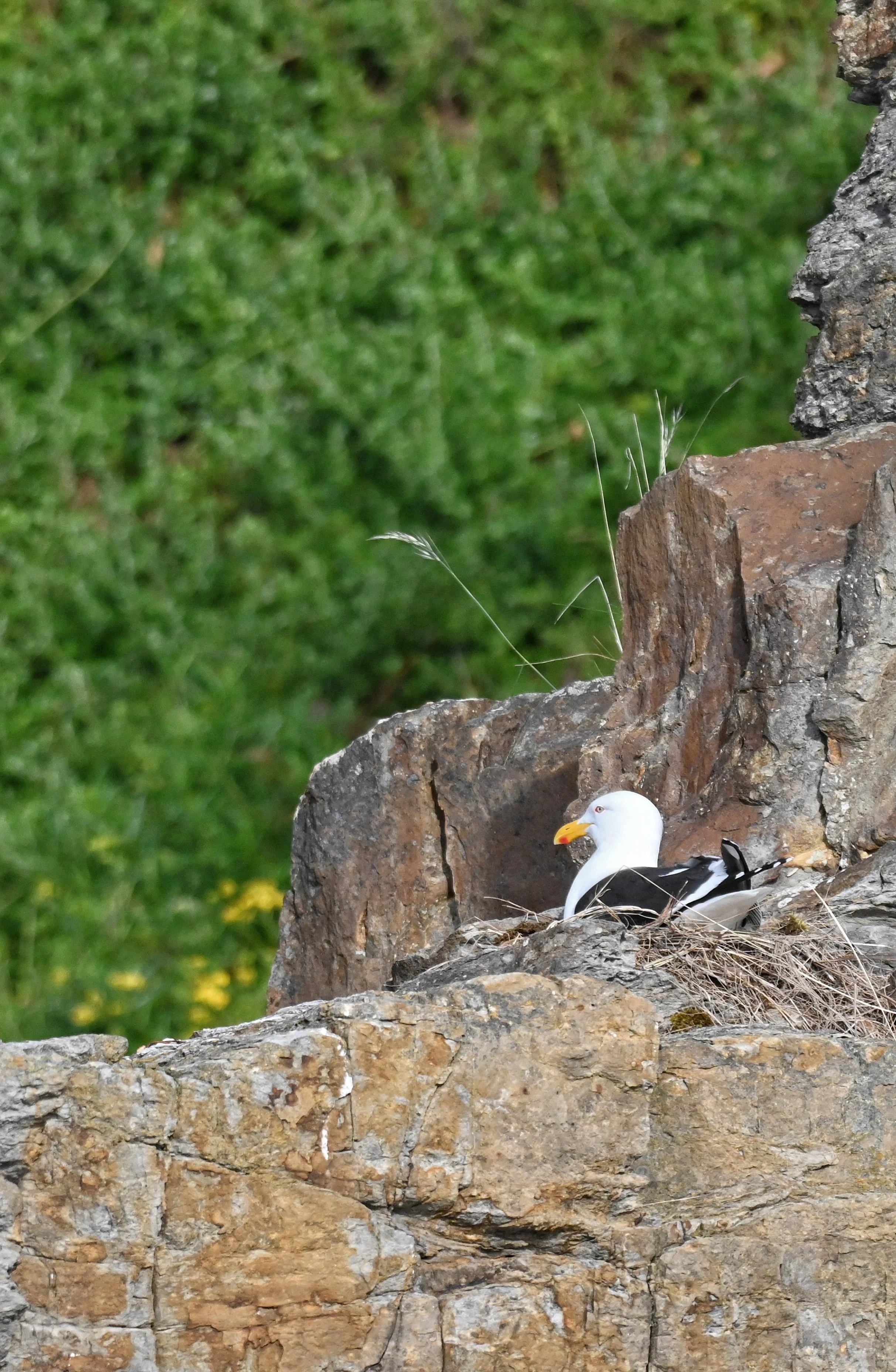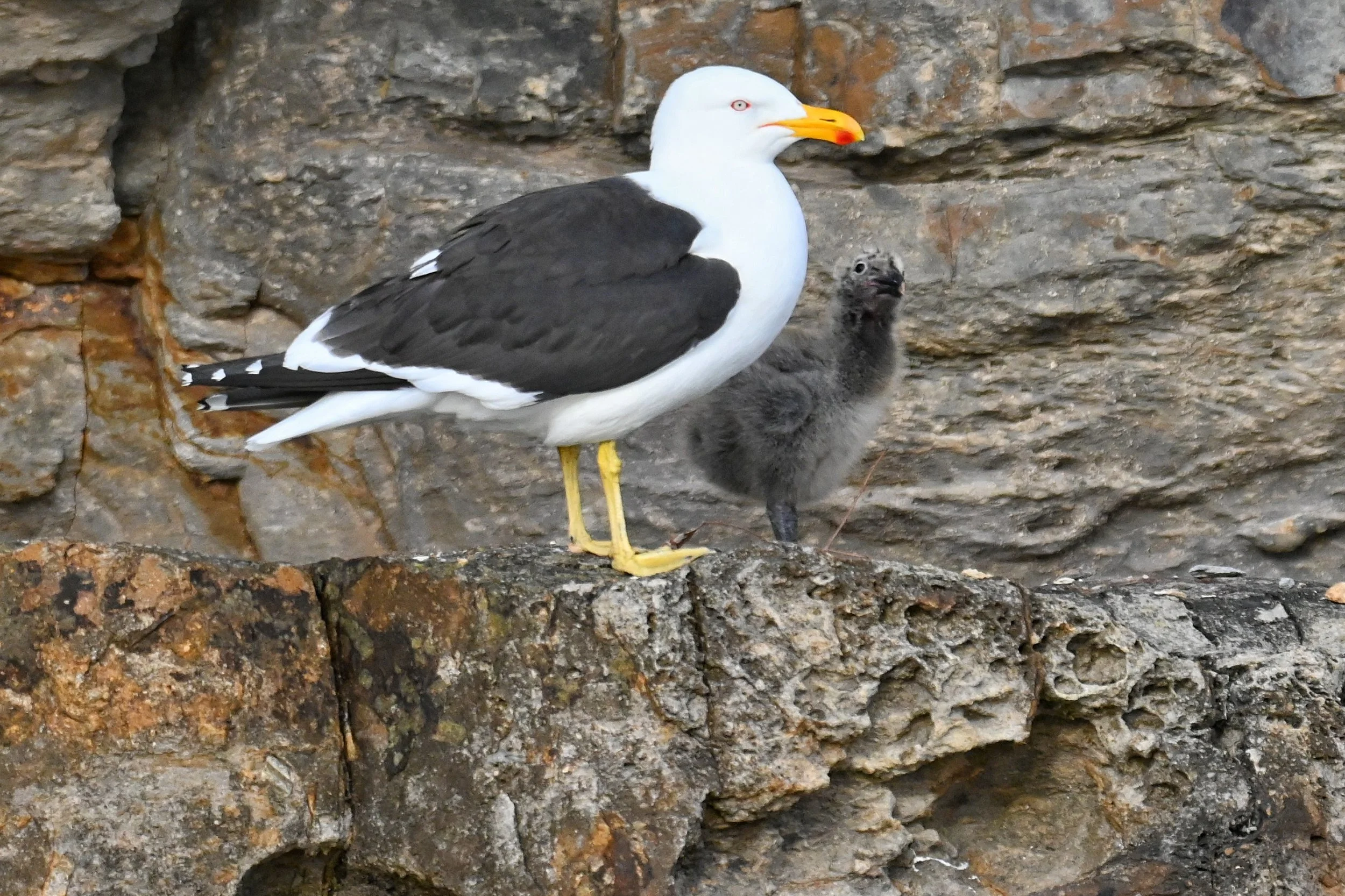where do kelp gulls nest?: a morning along the alum cliffs
I checked the forecast for the right conditions. To avoid a wet entry and exit in the shore break we needed little to no swell coming up the estuary, and a high tide to avoid dragging the boat over too far an expanse of sand. Most important, as always, was the wind. Nothing spoils a day on the river faster than the chop of a steady breeze. One morning in early November looked perfect. I sent off an invite, she accepted. Michelle and I would head off to photograph the nesting Kelp Gulls (Larus dominicanus) along the Alum Cliffs.
I’d first noticed the Kelp Gulls along the cliffs years ago while drifting the reefs at the cliff edge in a kayak I’d acquired from Facebook Marketplace. Like all the Whale River vessels, it was a second-hand colorful number - cheap and cheerful being two things our budget and approach to DIY citizen science requires. It had been built to glide with a shallow draft over the inshore reefs of the tropics, and was built heavy duty to withstand the inevitable bumps. It was a perfect vessel for early explorations of the river.
In those early trips of (self) discovery, I was joyed by the sight of the birds perched in the small caves and ledges of the cliffs. Kelp gulls are common in nipaluna/Hobart. A recent count saw their numbers reach over 5700, with was seven times more than the count in the 1980’s. At the moment I live on Liverpool Street, and the bird I most often see gliding over the city are kelp gulls. They soar albatross-like from South Hobart down along the rivulet towards town, barely flapping a wing as they ride drafts of air invisible to the naked eye. There’s a nest across from my balcony on the roof of the Aged Care home along the rivulet, and occasionally one will land however briefly on the power pole in front my house. In the CBD I often see them perching on top of the Commonwealth Bank or Banjos, overlooking the pedestrian intersection of Liverpool and Elizabeth Street.
A self-introduced species, kelp gulls are similar to the Pacific Gull (Larus pacificus). I learned to tell the difference between the two by a rhyme Josh Pringle - founder of Keep Tassie Wild - shared with me: “imagine the red markings on their peaks is lipstick. Pacfics are specific and get lipstick on both top and bottom, but kelps need help and only manage to apply it to the bottom mandible.” There are other ways I am sure, but so far that has helped. The birds likely arrived in the 1950s, flying over from Aotearoa/New Zealand and establishing themselves on the mainland continent and in lutruwita. A research paper in 1998 claimed that the largest population of Kelp Gulls in Australia is now found in South-East Tasmania.
We motored out slowly, cautious of Michelle’s very large and presumably very expensive camera. I had asked if she wanted to join me this morning, contributing her skills with a long lens to photograph what I had hoped were newly-emerged kelp gull chicks along the cliffs. Michelle runs a very popular Instagram account with thoughtful and fun shots of Tasmanian wildlife (@girlofhobart). It was our first time hanging out together, and the gentle ride out to the cliffs was a fun way to get to know each other.
Kelp gulls breed either in loosely grouped colonies, or as isolated pairs. The birds of the alum cliffs, given the shape of the landscape, kind of seem to do both. On the ledges and small caves of the cliffs, a pair of birds construct their nests from twigs, grass, and other material. Sometimes the nests resemble a cliche bowl-like structure, other times it is a little more than a collection of twigs. On this trip we saw both, the latter often giving rise to a joke about the preparedness of some soon-to-be bird parents.
I haven’t found anything definitive describing the breeding details of Kelp Gulls in Tasmania. In the subantarctic, it is said they lay eggs between November and December, usually 3 per nest. They incubate the eggs for 23-30 days, and then raise them as fledglings for a further 43-60. In the slightly warmer climes of Tasmania, I imagine the process might start slightly earlier.
Despite the calm conditions, it wasn’t as easy as I had hoped to get a closer look at the lives of the kelp gulls along the cliffs. I would keep the boat steady, keeping an always vigilant eye on puffs of wind raising up the river from the south, and on any rogue bits of swell or strong wakes from the cruise ships that were just beginning to arrive for the summer season. Michelle would fire off a dozen shots and then say “Don’t get your hopes up.” I figured she was just being modest, or perhaps as a way of using some kind of reverse psychology on the great luck involved in observing the natural world.
Throughout it all, I was unsurprisingly keeping an eye out for whales. A long season had gone by without many sightings in the river, and with the demise of the Whales Tasmania Facebook page any sightings being made weren’t being shared in real time. Part of me felt guilty for not giving my full presence and attention to the birds we were here to see, but I reminded myself that it was the desire to connect and learn about the whales of the river that had me out here looking at birds in the first place. I am still making sense of the attention economy of the river. I hope to write about it once I figure it all out.
By the time we motored back to shore, Michelle and I were not confident we’d seen a chick. We’d seen some plenty of lovely moments of kelp gull life, as well as species like Welcome Swallows (Hirundo neoxena) flittering about like butterflies and pairs of Sooty Oystercatchers (Haematopus fuliginosus) jetting past low to the water. It wasn’t until later, when she had her images up on the big screen, the she messaged me excitedly. Camouflaged against the orange-browns of the cliff were numerous photos of chicks alongside their parents (both male and female kelp gulls are involved in nesting and fledgling care).
The chicks were tall and grey, with little wings and long legs making them look much more like a flightless bird than the graceful gliders they will one day become. Always with at least one of their parents nearby, they seemed oblivious to the risks of tumbling from their clifftop roosts - at times as much as 25 meters from the water below. It was a real joy to run over this photos. To zoom in on their strange-to-me faces, bulging eyes that saw the world in ways I would never understand, and just so comically different from the parents that had created them. This is not unique in the bird world of course, but seeing the world from the eyes of a mammal it raises so many questions about how they recognise each other, and what other unseen bonds bind them.
One question answered, many others emerge. Knowing now that kelp gulls nest along the Alum Cliffs I wonder now about the rest of their lives. How many of these chicks survive? What might prey upon them? Are Kelp Gulls truly monogamous or is that another one of those truths that modern observation is proving to be an exaggeration? What forms their diet? Is it, as research has shown, one reliant on the refuse tips of humans, bellies long full of plastic and waste as they fish about our scraps? As new arrivals from Aotearoa, have they not learned to rely on the natural shorelines that their endemic relatives the Pacific Gull still prefers? When you pay attention to one thing, you pay attention to everything. This is fast becoming the catchphrase of the whale river project. We will no doubt be writing about some of these questions and more soon.



